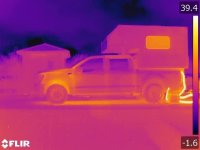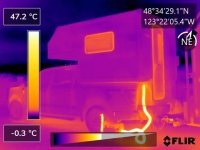The Aterra by AT has has my attention the most for quality and lightness… curious about people’s opinions on warmth?
Bison and similar you can almost build out for $40k less. Hard to justify that big of a difference
As others have mentioned the lightness of the Aterra comes at a cost and that is the thickness and type of composite paneling they use. I think someone has mentioned it's about 1/2 to maybe 3/4" thick material? By comparison I think the Bison uses 1.5" panels, TC 2" panels and Cascadia 3" panels. I'm sure the Aterra is adequate in winter but you may be seeing a lot more condensation and I'm positive the Truma will be running quite a bit harder through the night. Seems like with some of the other composite campers you can run a 2kW or 4kW diesel heater and still be plenty warm in very cold winters.
I think the Aterra is priced right for a full build with everything. All the components and systems seem very high quality which add to the price. The benefit with a shell build is that you can tailor it what you want and stick to a price point or budget as desired. I think if winter camping is a big sticking point with you I would look at other options than the Aterra. They seem to be a lot more robust and up to the task of winter camping than the Aterra IMO.


